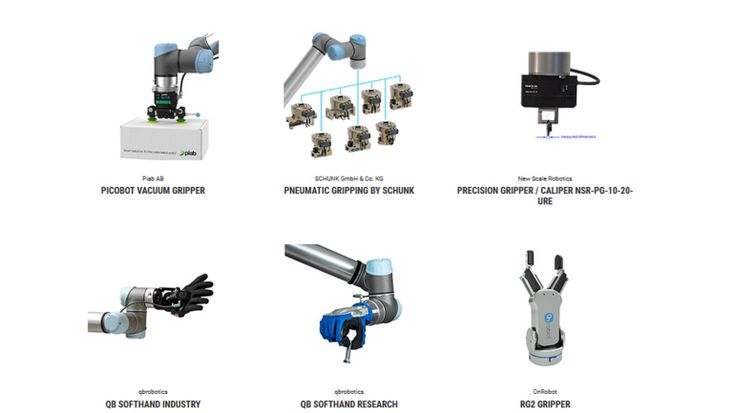2. Accessories
Grippers, cable guidance systems and protective covers are some of the most important accessories when it comes to protecting your cobot application, maximizing its long-term performance and ensuring the highest standards of safety.
There are two types of clamps in the cobot world. The first is a type of cobot gripper that holds items steadily in place, which could help with detailed work that requires a stable hand. The second keeps accessories like energy chains and protective hoses fixed to your cobot, which can be easily added and removed by your operatives.
3. Palletizing tools
Monotonous tasks or ones that put your human staff at risk are best handled by a cobot. With the right tech solution and end effector, cobots can step in and tackle a range of palletizing duties. Using application-specific software, you can input the dimensions of the items your cobot will be picking up, and set an exact pattern for how they should be stacked. Or you can opt for an automatic solution, which will help you get started without needing to input complex trajectory information.
If you need to move heavier goods there are accessories such as the ‘Cobot Lift’, which can increase your robotic arm’s payload from 10kg to 45kg. Although its footprint is 50% smaller than the cell of a typical industrial robot, it has similar capabilities and can typically be used without a cage or safety fence, giving you additional lifting power while saving on floor space. Plus, it works with vacuum, mechanic, electric or magnetic end effectors, allowing you to pick up a wide range of items.
4. Pick & place tools
Now, pick & place end effectors are smarter than ever thanks to AI-powered machine vision. Your cobot can be trained to ‘look’ for certain items and learn to discard items that are incorrect or don’t meet the quality threshold. The beauty of a pick & place cobot application is that it can often work directly alongside its human colleagues without safety caging. Built-in sensors will detect a potential collision and automatically stop the motion of the robot if the force is above an adjustable threshold. External safety devices such as the https://www.universal-robots.com/plus/products/sick/sick-safety-sbot-stop-package/Your cobot could be bin picking shoulder to shoulder with your people, allowing them to start their work with the right components, materials, or parts as soon as they have been sorted.




